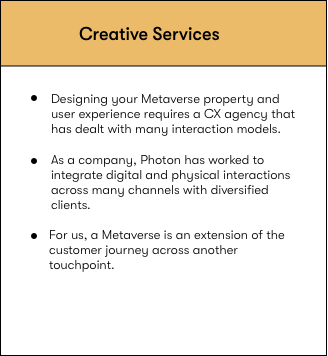Agentic AI, autonomous, decision-making systems capable of managing complex tasks and adapting dynamically represents the next frontier in enterprise transformation. Unlike traditional automation, agentic AI can sense, decide, and act independently, driving agility and innovation at scale.
Why Agentic AI Success Requires Strategy, Not Experimentation
Strategy > Experimentation. Every time.
Yet many organizations struggle to realize its full potential. Common pitfalls include clinging to siloed structures, relying on static performance metrics, treating governance as a one-time hurdle, and mistaking basic automation for true autonomy. Gartner forecasts that by 2027, over 40% of agentic AI projects will be canceled due to poor alignment and unclear business value [6].
Why Traditional Models Fall Short
Most enterprises still treat agentic AI as a mere extension of automation, deploying isolated AI tools within existing hierarchies to cut costs or speed execution [1]. This approach ignores the deeper organizational transformation that agentic AI requires.
As MIT Sloan notes, understanding how to collaborate effectively with autonomous AI agents is still in its infancy [2]. Unsurprisingly, early initiatives often underperform.
Common Shortcomings
- Persistent Silos: AI often reinforces old data and departmental boundaries instead of dissolving them [1].
- Static KPIs: Success remains defined by lagging indicators — ROI or cost reduction — rather than adaptability and learning [3].
- Ethics as Afterthought: Governance is episodic, with compliance treated as a checkbox rather than an evolving system of trust [4].
- Vendor “Agent-Washing”: Many so-called agentic solutions are merely rebranded automation tools, offering marginal improvement [5].
The lesson is clear: agentic AI is not a plug-and-play technology. It demands a rethinking of the enterprise operating model itself — structurally, culturally, and ethically.
Seven Pillars of a Future-Ready Agentic AI Operating Model
1. Agentic Mesh Networks — Beyond the Org Chart
Replace rigid hierarchies with dynamic mesh networks of humans and AI agents organized around shared outcomes rather than functions [1]. These networks enable fluid, cross-functional collaboration, real-time decisioning, and ecosystem-wide adaptability.
Shortcoming addressed: Breaks down silos and fosters continuous coordination across boundaries.
2. Purpose-Graph Alignment
Shift from process optimization to purpose orchestration. Autonomous agents continuously sense, reason, and act in pursuit of strategic and societal goals [4]. The organization becomes a living “purpose graph” — dynamically allocating resources to where they create the most impact.
Shortcoming addressed: Elevates operations from narrow task execution to mission-aligned value creation.
3. Agentic AI as the Connective Tissue
Position AI agents as the enterprise nervous system, linking intelligence, workflows, and decisions across domains [4]. Agents become active liaisons — routing data, triggering actions, and coordinating with partners and regulators — minimizing manual handoffs and latency.
Shortcoming addressed: Enables end-to-end transparency and adaptive collaboration internally and externally.
4. Custom Enterprise Agents for Strategic Value
Develop bespoke AI agents deeply embedded in your proprietary data, workflows, and business logic [5]. These custom-built agents — from risk underwriting to supply-chain optimization — embody your organizational DNA and cannot be easily replicated by competitors.
Shortcoming addressed: Counters vendor “agent-washing” and builds durable competitive differentiation.
5. Self-Evolving Governance and Real-Time Ethics
Governance must evolve as dynamically as the systems it monitors [1, 4]. Embed ethical guardrails and compliance logic directly into agent workflows. Deploy “watchdog agents” to detect anomalies, enforce policy, and self-audit behaviors. Simulate “risk game days” to test governance resilience.
Shortcoming addressed: Moves governance from static compliance to a living, self-regulating system of trust.
6. Outcome-Aligned Metrics — Trust Scores and AQ
Redefine performance through streaming, forward-looking indicators [3]. Introduce:
- Adaptability Quotient (AQ): Real-time measure of human–AI responsiveness.
- Trust Scores: Quantify transparency, accuracy, and explainability of agentic decisions.
- Sustainability Index: Tracks AI alignment with ESG and societal goals.
Shortcoming addressed: Prioritizes agility, learning, and ethical performance over output volume.
7. Cross-Enterprise Ecosystem Playbooks
Extend the model beyond corporate walls [1]. Build shared agent networks with suppliers, regulators, and industry partners. Examples include collaborative compliance agents or shared logistics agents that balance supply chain loads in real time.
Shortcoming addressed: Turns ecosystems into innovation networks, creating shared advantage and resilience.
The Agentic Enterprise Operating System (AEOS)
To translate these pillars into practice, enterprises need a unifying architecture that integrates strategy, structure, and governance. The Agentic Enterprise Operating System (AEOS) provides that foundation — combining human capability, intelligent systems, and organizational design into one adaptive construct.

Core Operating Pillars
- Strategy to Execution: Aligns AI initiatives directly with enterprise priorities through a value orchestration engine that connects strategic intent to measurable impact.
- Organizational Structure: Establishes federated AI centers of excellence, domain pods, and embedded translators to balance global consistency with local agility.
- Processes & Workflows: Institutionalizes learning loops and ModelOps pathways to scale AI from experiment to production.
- People & Talent: Develops AI fluency, new hybrid roles, and adaptive leadership models to foster a culture of trust and innovation.
- Technology Platforms: Builds a composable infrastructure — GenAI platforms, orchestration layers, and knowledge graphs — to support secure, explainable, and sustainable AI.
- Governance & Risk: Embeds Responsible AI oversight, traceability, and auditability to ensure transparency and accountability [7].
Meta-Layers that Drive Adaptation
- Vision & Meta-Readiness: Measures enterprise readiness for autonomy through cultural, ethical, and technical indices.
- Agentic AI Capability Map: Defines maturity across orchestration, model governance, and simulation readiness.
- Innovation & Learning Flywheel: Ensures continuous feedback through the Discover → Design → Deploy → Derive loop.
- Measurement & Future-State Vision: Tracks progress via multidimensional KPIs — strategic, operational, and cultural.
- Human Experience & Ethical Coevolution: Ensures AI augments human dignity, trust, and creativity.
- Economic, Sustainability & Value Architecture: Balances ROI with externalities through impact accounting and reinvestment governance [7].
Together, these layers create a self-learning, purpose-driven enterprise capable of sensing, deciding, and acting with agility — while staying ethically and economically balanced.
Implementation Roadmap
Moving from concept to capability requires deliberate sequencing. Below is a pragmatic path to operationalizing the AEOS.
- Diagnose Silos and Fragmentation: Conduct a holistic audit across teams, data, and workflows. Identify redundant bots, disconnected tools, and missed integration points. This “silo map” guides where to focus early agentic integration efforts.
- Design Purpose Networks: Replace hierarchical charts with purpose networks — hybrid human–AI teams aligned to business outcomes. Define clear accountability nodes for each major goal, ensuring both human and machine actors can dynamically collaborate.
- Build and Deploy Custom Agents: Identify high-value opportunities for proprietary agents (e.g., customer care, pricing, or risk mitigation). Start small — build, test, scale — developing an internal agent factory that incrementally expands capability and consistency.
- Establish Dynamic Governance Engines: Deploy AI auditors and policy agents. Treat governance rules as “living code” — continuously updated to reflect evolving regulations and enterprise priorities. Enable real-time ethical monitoring and incident response.
- Adopt Adaptive KPIs: Move beyond quarterly reviews. Embed live metrics like AQ and Trust Scores into dashboards. Tie team goals to how effectively they integrate AI — e.g., reduced handoffs, faster cycle times, improved accuracy.
- Pilot External Collaboration: Launch pilots where your agents interact with external partners or regulators — such as shared compliance bots or collaborative logistics agents. Use these to define playbooks and governance models for ecosystem integration.
- Institutionalize Continuous Learning: Treat the operating model as a living product. Establish a formal review cadence (e.g., biannual) to refine structures, retrain teams, and evolve the governance stack. Gather feedback from employees, customers, and oversight bodies to ensure alignment with both performance and ethics.
Through these steps, organizations gradually shift from fragmented automation to fully agentic operations — adaptive, purpose-driven, and self-optimizing.
Conclusion: Pioneering the Agentic Era
The next era of AI leadership will not belong to those who automate faster, but to those who reimagine the enterprise itself. Agentic AI offers a pathway to transform static organizations into adaptive organisms — where humans and intelligent agents co-create insight, innovation, and impact.
Early adopters are already realizing outsized benefits in efficiency, speed, and resilience. The global market for autonomous agents is expected to grow from $7.5 billion in 2025 to nearly $200 billion by 2034 [8]. As IBM observes, agentic AI is emerging as “the next big thing” and a cornerstone of enterprise innovation [9].
Organizations that act boldly now — building bespoke agents, establishing dynamic governance, and embedding agentic principles at their core — will define the standards of the agentic era and set the pace for the decade ahead.
The views and opinions expressed in this blog are those of the author and do not necessarily reflect the official position or perspective of Photon.
References
- McKinsey & Company (2025). The Agentic Organization: Contours of the Next Paradigm for the AI Era.
- MIT Sloan Management Review (2025). Four New Studies About Agentic AI.
- IBM (2025). Agentic AI’s Strategic Ascent.
- eGlobalis (2025). Beyond the Silo Walls: How Agentic AI Redefines the Enterprise Operating Model.
- Bain & Company (2025). Building the Foundation for Agentic AI.
- Harvard Business Review (2025). Why Agentic AI Projects Fail — and How to Set Yours Up for Success.
- Photon (2025). AI & Innovation Operating Model Framework.
- Precedence Research (2025). Global Autonomous Agents Market Growth.
- IBM (2024). Agentic AI: Four Reasons Why It’s the Next Big Thing in AI Research.










